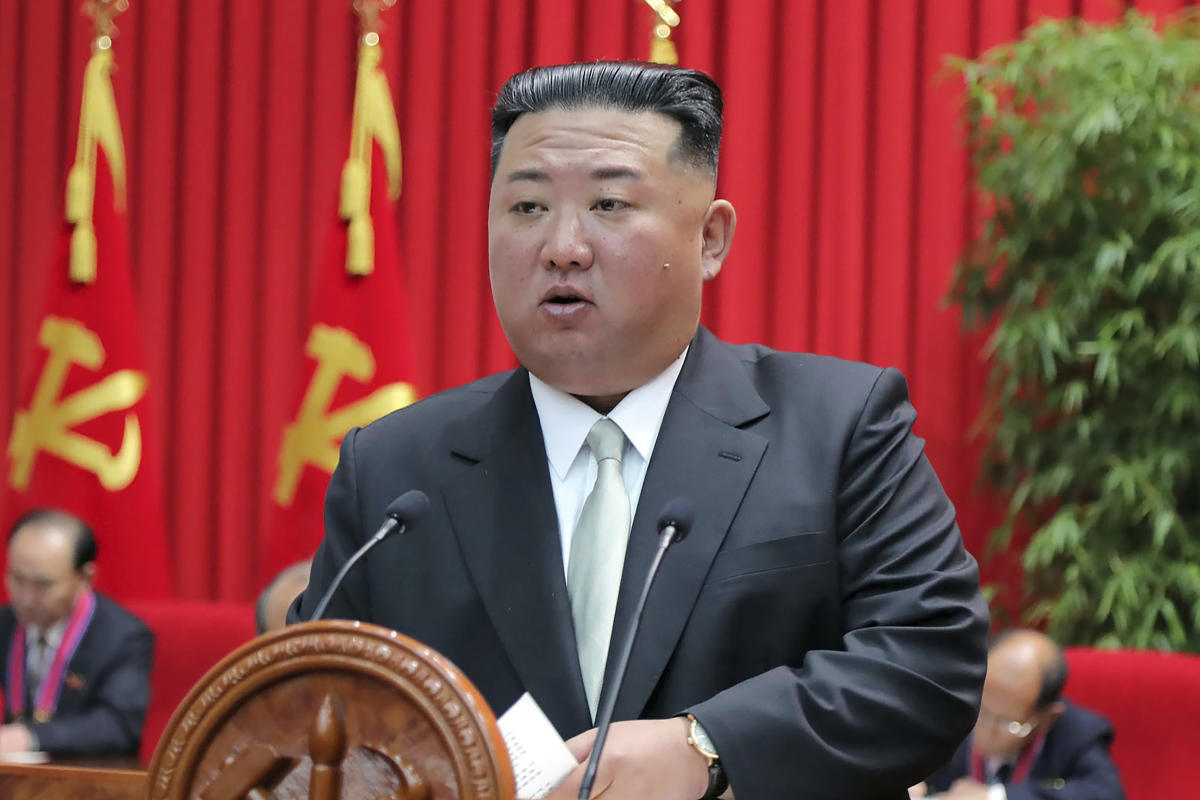
SEOUL, South Korea (AP) — North Korea fired a pair of ballistic missiles on Sunday toward its eastern waters, its first weapons test in a month and coming two days after it claimed to have performed a key test needed to build a more mobile, powerful intercontinental ballistic missile designed to strike the U.S. mainland.
South Korea’s military detected the launch of two North Korean ballistic missiles from its northwest Tongchangri area. The missiles flew across the country toward its eastern waters, South Korea’s Joint Chiefs of Staff said in a statement.
It said the missiles were fired about 50 minutes apart but gave no further details, like precisely what type of weapons North Korea fired and how far they flew. The Joint Chiefs of Staff said South Korea’s military has bolstered its surveillance posture and maintains a readiness in close coordination with the United States.
Japanese officials said the two missiles fell in the waters between the Korean Peninsula and Japan and that no damage to ships or human injuries have been reported. Japanese Vice Defense Minister Toshiro Ino told reporters that both missiles flew a distance of 500 kilometers (310 miles) at a maximum altitude of 550 kilometers (340 miles). He criticized North Korea for threatening the safety of Japan, the region and the international community.
The Tongchangri area is home to North Korea’s Sohae Satellite Launching Ground, where the country in past years launched satellite-carrying long-range rockets in what the U.N. called a disguised test of ICBM technology.
North Korea said Friday it tested a “high-thrust solid-fuel motor” for a new strategic weapon in the Sohae facility the previous day, a development that experts say could allow it to possess a more mobile, harder-to-detect arsenal of intercontinental ballistic missiles that can reach the U.S. mainland.
Sunday’s launch is the North’s first public weapons test since the country last month launched its developmental, longest-range liquid-fueled Hwasong-17 ICBM capable of reaching the entire U.S. homeland. Earlier this year, North Korea test-launched a variety of other missiles at a record pace, despite pandemic-related economic hardships and U.S.-led pressures to curb its nuclear program.
North Korea has defended its weapons testing as self-defense measures to cope with the expanded U.S.-South Korea military drills that it views as an invasion rehearsal. But some experts say North Korea likely used its rivals’ military training as an excuse to enlarge its weapons arsenal and increase its leverage in future negotiations with the U.S. to win sanctions relief and other concessions.
“In the face of mounting diplomatic pressure after an unprecedented year for North Korean missile tests, the Kim regime is determined to show no weakness ahead of its New Year’s political events,” said Leif-Eric Easley, a professor at Ewha University in Seoul.
The weapon North Korea said it could build with the recently tested motor likely refers to a solid-fueled ICBM, which is among a list of high-tech weapons systems that leader Kim Jong Un vowed to procure during a major ruling party conference early last year. Other weapons systems Kim promised to manufacture include a multi-warhead missile, underwater-launched nuclear missiles and spy satellites.
All of North Korea’s existing ICBMs use liquid propellant, which must be added to the weapons before they’re fired. This makes it relatively easier for outsiders to spot their launch preparations via satellites. But fuel in solid-propellant rockets is already loaded inside, so it shortens launch preparation times, increases their mobility and makes it harder for outsiders to learn what’s happening ahead of liftoff. North Korea already has a growing arsenal of short-range, solid-fueled ballistic missiles targeting key locations in South Korea, including U.S. military bases there.
In reaction to North Korea’s testing activities, the South Korean and U.S. militaries have expanded their regular drills and resumed trilateral trainings with Japan. But security jitters about North Korea’s nuclear weapons have increased in South Korea and Japan, as the North has threatened the preemptive use of nuclear weapons, taking reported steps to deploy nuclear-capable, short-range missiles along its border with South Korea and test-firing a missile over Japan.
The exact status of North Korea’s nuclear attack capability remains in secrecy.
Some experts speculate North Korea already has functioning nuclear-tipped missiles that can hit the entire U.S. and its allies South Korea and Japan, given the number of years it has spent on its nuclear program. But others say the country is still years away from acquiring such weapons, noting it has yet to publicly prove it has a technology to build warheads small enough to be placed on missiles or protect warheads from the harsh conditions of atmospheric reentry.
—
Associated Press writer Mari Yamaguchi in Tokyo contributed to this report.




